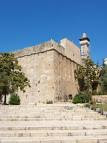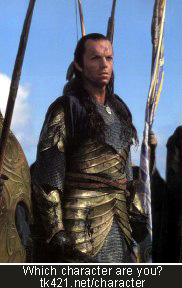
Human Rights activists, especially in Europe and on the Israeli and Jewish Left, regularly rail against discrimination against Israel's Arab citizens. In fact, those Arabs enjoy equal rights with Jewish Israelis under Israeli law and enjoy civil liberties that would be unavailable to them as the citizens of any Arab country in the world. Specfically with respect to real estate, the Israeli Supreme Court has upheld the right of an Israeli Arab to buy real property and live in any residential neighborhood in Israel.
In the "moderate" Arab Kingdom of Jordan and the Palestinian Authority, to say that the converse is not true would be a gross understatement. In fact, selling real property to a Jew is a capital crime, meaning, yes, the seller is subject to the death penalty.
Some weeks ago, the news became public that a Jewish organization, acting through non-Jewish intermediaries, had purchased a building in an Arab neighborhood of Hebron from its Arab owners. At least one of the Arab owners was unaware of the Jewish identity of the purchasers; most likely all of them were kept unaware, in order to protect them. The new owners of the building, pictured at upper right, promptly renamed the building Beit Shalom, House of Peace, and stated that their objective was to live at peace with their Arab neighbors. Immediately following the announcement of the transaction, Israeli police launched an investigation into the legality of the sale, and the Defense Ministry under the auspices of left-leaning Labor Chairman Amir Peretz began searching for grounds to expel the new Jewish residents of the building. The resulting police investigation could not find any evidence of wrongdoing in the sale, and many within the police and defense establishment are acknowledging the sale was legal, albeit off-the-record.
Now Israel National News
reports that two Arabs involved in the sale have been arrested, one by the Palestinian Authority and one by Jordan, and are charged with the unforgiveable and dastardly crime of selling real property to a Jew. They both face the death penalty if convicted.
The Kosher Hedgehog waits for the outcry from Human Rights organizations throughout the Arab and Moslem world, or even from the European Union, or Peace Now, or the Reform Jewish movement. However, since due to the allergy season and the effects of a recent office fire, the Kosher Hedgehog finds that he is suffering some breathing impairment, he will not hold his breath.
[In the interest of full disclosure, the Kosher Hedgehog is a real estate attorney who favors the unfettered alienability of real property, even to Jews.]

And why would Jews be interested in a building in Hebron. Hebron was one of the dwelling places of Abraham, the father of the Jewish people. One of the first recorded real property transactions was the purchase by Abraham of a burial place for his late wife, Sarah, at the Cave of Machpelah in Hebron. [Genesis, Ch. 23.] Later, Abraham himself was buried in the Cave of Machpelah, as were his son Yitzchak (Isaac), Yitzchak's wife Rivka (Rebecca), Yitzchak's son Yaakov (Jacob), and Yaakov's wife Leah.
Still later, Hebron was the first capital of King David, when he became King over Israel.
The site of the Cave of Machpelah has been continuously identified since Biblical times, and today is inside a building constructed in the first century of the Common Era by King Herod the Great. (See photo, above left.) Despite the holiness of the site to Judaism, during lengthy periods of time when Hebron was under Islamic rule, Jews were not allowed to enter the building, but could only climb up to the seventh step of the entry stairs.
Because of its holiness, Jews have always sought to live and study Torah in Hebron. Jews lived in Hebron continuously, even after the Roman and Arab conquests of Judea. Arab and Jewish historians describe Jews living in Hebron in the Ninth and Tenth Centuries of the Common Era. When the Crusaders conquered Hebron in 1099, they expelled its Jewish residents and turned their synagogue into a Church. However, Jewish life began again when the Kurdish Muslim leader Salah ed Din retook Hebron in 1187. His Jewish personal physician, the famed Jewish scholar and philosopher Moses Maimonedes, even managed to visit the Cave of Machpelah in 1166, near the end of Crusader rule. "And on the first day of the week, the ninth day of the month of Marheshvan, I left Jerusalem for Hebron to kiss the graves of my forefathers in the Cave of Makhpela. And on that very day, I stood in the cave and I prayed, praised be God for everything."
From then until 1929, Hebron was the site of a small Jewish community. Throughout the Ottoman Empire rule, (1517-1917), groups of Jews from other parts of the Holy Land, and exiles from Spain and other parts of the diaspora and settled there. Hebron at this time became a center of Jewish learning. In 1540 Rabbi Malkiel Ashkenazi bought a courtyard and established the Abraham Avinu Synagogue. In 1807, the Jewish community purchased a 5-dunam plot upon which the city's wholesale market stands today. Then, in 1929, Arabs rioters killed 67 Jews and wounded 60, and Jewish homes and synagogues were ransacked. Two years later, 35 families moved back into the ruins of the Jewish quarter, but after further riots, the British Government decided to move all Jews out of Hebron "to prevent another massacre".
From 1948 until 1967, Hebron was under the rule of the "moderate" Arab Kingdom of Jordan. During this time period, the Jewish Quarter was destroyed, Jewish cemeteries were desecrated, 58 synagogues were destroyed and an animal pen was built on the ruins of the Abraham Avinu Synagogue. Jews were not permitted to visit the holy site of the Cave of Machpelah at all. That situation ended with the Israeli conquest of Hebron in the June 1967 Six-Day War. Thereafter, Jews returned to start the settlements of Kiryat Arba and Hebron. Such people are referred to by the United States State Department as "obstacles to peace."
Because of its long veneration as a Jewish holy site, Hebron, the City of the Patriarchs, is regarded by Jewish tradition as one of the four holy cities of the Land of Israel, the others being Yerushalayim (Jerusalem), always first and foremost in the Jewish heart, Tiberias and Tzfat (Safed).
It should be noted, however, that Palestinian Arab historians deny that any of the above thoroughly documented Jewish connections to Hebron have any semblance in reality.
 The mainstream media, covering the first Democratic Presidential candidates debate, remarked upon the remarkable unity of the candidates against the "common enemy," namely President George W. Bush. The Democrats seem to have forgotten that President Bush is not running for re-election. They also seem to have forgotten that the enemy posing a deadly peril to freedom in the Western democracies is not President Bush, but Islamism. Dry Bones has not forgotten, however, as Yaakov Kirschner proves with the cartoon above. The Democratic majority in Congress, however, has elected to accept defeat in Iraq as the price it will pay for political victory over the Bush Administration. Congress has as much as said to Al Qaeda and the Baathists insurgents, "Just hold out until October, and the U.S. military will no longer be around to oppose your efforts to take power in Iraq."
The mainstream media, covering the first Democratic Presidential candidates debate, remarked upon the remarkable unity of the candidates against the "common enemy," namely President George W. Bush. The Democrats seem to have forgotten that President Bush is not running for re-election. They also seem to have forgotten that the enemy posing a deadly peril to freedom in the Western democracies is not President Bush, but Islamism. Dry Bones has not forgotten, however, as Yaakov Kirschner proves with the cartoon above. The Democratic majority in Congress, however, has elected to accept defeat in Iraq as the price it will pay for political victory over the Bush Administration. Congress has as much as said to Al Qaeda and the Baathists insurgents, "Just hold out until October, and the U.S. military will no longer be around to oppose your efforts to take power in Iraq."

































